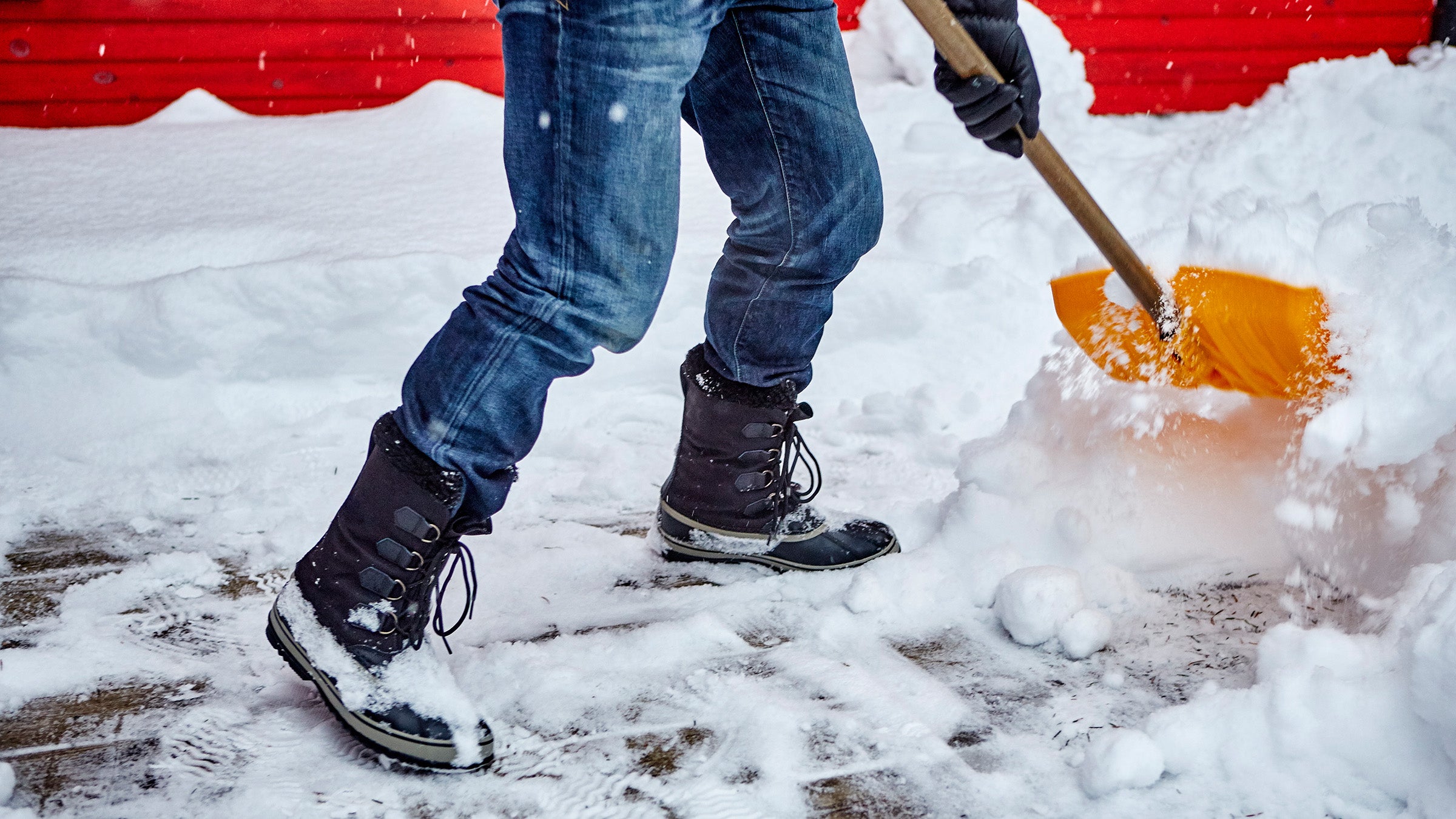The best type of winter footwear varies dramatically depending on the environment. But whether you’re trudging through feet of snow to collect firewood or simply walking your dog on a chilly afternoon, the right set of duds makes all the difference. Our test crew of six women and four men tried 38 pairs of boots, from thick, farm-ready mucks to fashion-forward Chelseas in foul winter weather across the country. These eight picks rose to the top.
At a Glance
- Best Overall: Blundstone All-Terrain Thermal Chelsea Boot ($265)
- Most Durable: L.L. Bean Shearling-Lined 8” Bean Boot ($289)
- Best Casual Men’s Boot: Bogs Arcata Urban Chelsea ($150)
- Best Casual Women’s Boot: Forsake Lucie Chelsea ($135)
- Best Men’s Boot for Outdoor Chores: Bogs Bozeman Tall Boots ($160)
- Best Women’s Boot for Outdoor Chores: Bogs Whiteout Faded Boots ($160)
- Best for Deep Snow: L.L. Bean Snow Boots ($149)
- Best Traction: Icebug Pace3 BUGrip GTX ($230)
- Other Products We Tested
- How to Choose a Winter Boot
- How We Test
- Meet Our Testers
If you buy through our links, we may earn an affiliate commission. This supports our mission to get more people active and outside. Learn more.
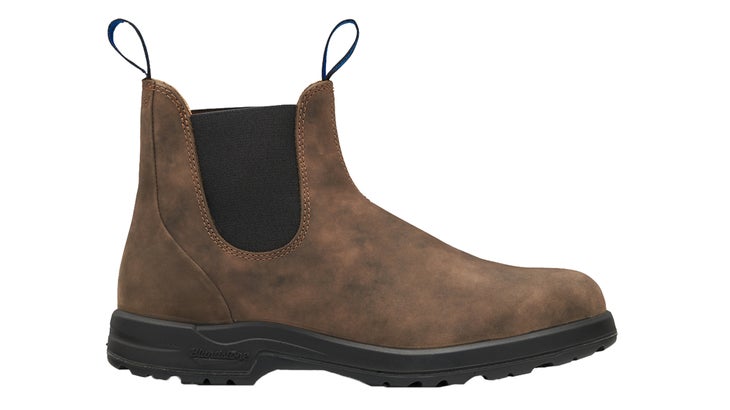
Best Overall
Blundstone All-Terrain Thermal Chelsea Boot
Size Range: 4-13 (men’s), 6-11 (women’s)
Pros and Cons
⊕ Classic Chelsea boot style
⊕ Fully waterproof
⊕ Grippy Vibram soles
⊗ Tight fit around the heel
⊗ Hard to pull on and off
This winterized version of Blundstone’s classic Chelsea boot was an instant favorite. Several testers commented on how happily surprised they were that these boots are truly waterproof right out of the box thanks to a sealed latex seams and a special tanning process—not always the case with leather footwear.
Minnesota-based tester Stephanie Pearson wore these all winter through snow, ice, dirt, and slush. “They fare well in every condition I’ve tried them in short of deep snow,” said Pearson, adding that their sleekness was a welcome contrast to the bulky boots she usually needs for winters in Duluth. The grippy Vibram outsole provides adequate traction for moderately slippery conditions like fresh snow and icy patches.
A cozy, removable sheepskin footbed and Thinsulate lining made these comfortable in freezing temps. Our testers in Santa Fe agreed that these are versatile and rugged enough to wear almost every day from November through March. “If these boots weren’t so darn warm, I’d wear them year-round,” said one. And replacing the footbed with a regular insert extends the season through spring.
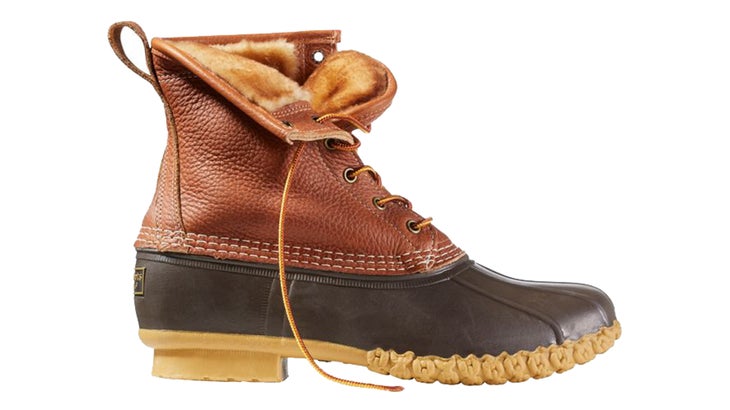
Most Durable
L.L. Bean Shearling-Lined 8” Bean Boot
Size Range: 7-14 (men’s), 5-11 (women’s)
Pros and Cons
⊕ Comfortable out of the box
⊕ Warm
⊕ Fully-gusseted tongue
⊕ Fully waterproof
⊗ Rubber sole is thin
“There are no boots I trust more,” said one of our testers, who has worn her pair of Bean Boots through nearly a decade of winters between Connecticut, California, Nevada, and New Mexico. We see these duds everywhere, thanks to multiple styles with different linings and shaft heights. The shearling-lined, 8-inch-tall variety—which hasn’t changed in years—is our choice for the most comfortable and rugged of the options.
The Bean Boots are easy to get on and off for mail runs, but comfortable and tough enough for hiking miles in snowy conditions. They require almost no break-in period, thanks to the plush and forgiving shearling lining inside, and the full-grain leather uppers get softer over time for even more comfort. The shearling does eventually pack down, making it less cushy, but we’ve found that takes several years to happen even with heavy use—and you can buy replacement insoles from L.L. Bean.
These boots are on the wide side, but the lacing system allows you to tie them down snugly, so most testers found they fit well regardless of foot shape.
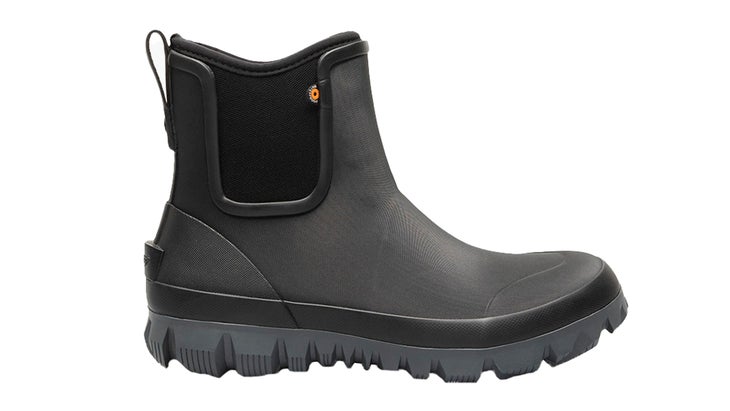
Best Casual Men’s Boot
Bogs Arcata Urban Chelsea
Size Range: 7-13 (men’s)
Pros and Cons
⊕ Easy on and off
⊕ Classic Chelsea style
⊕ Relatively eco-friendly
⊗ Not as warm or snug as others in test
These boots are longtime favorites for the aprés-ski crowd thanks to their combination of style, comfort, and practicality. The classic Chelsea aesthetic fits in on city streets and is easy to slip in and out of when you’re balancing on one foot to avoid the parking lot slush. Unlike other boots of this style, these are comfortable from the very first wear—no break-in period required—and have impeccable traction thanks to chunky rubber lugs, which kept us stable on ice and snow but didn’t hold onto mud. A fleece lining keeps feet warm, and the insoles are sweat-wicking, odor-fighting, and relatively eco-friendly thanks to algae-based EVA foam.
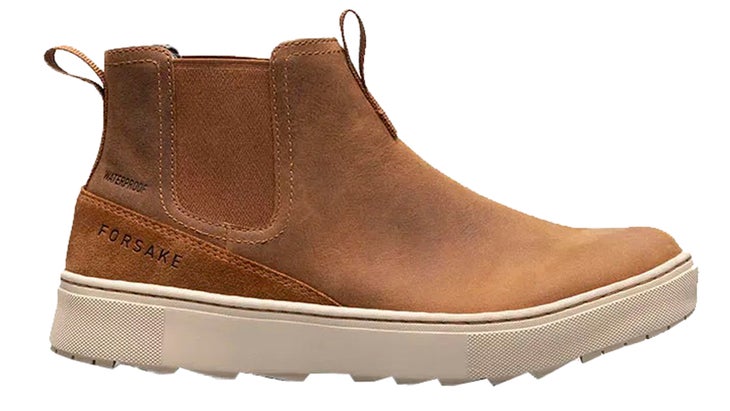
Best Casual Women’s Boot
Forsake Lucie Chelsea
Size Range: 5-11 (women’s)
Pros and Cons
⊕ Low-profile and lightweight
⊕ Sneaker-like comfort
⊕ Classic Chelsea style
⊗ Ankle too low for deep snow
This waterproof, full-grain leather and suede sneaker-boot is low key, classy, and easy to slip on and off. A cushioned EVA midsole and stable rubber outsole offer just enough traction to handle slippery sidewalks and snowbanks. The low profile, light weight, and thick rubber outsole on the Lucie made it comfortable to wear right out of the box. The upper looks fashionable and has an elastic gore for extra stretch around the ankle. And, despite the full leather upper and taped seams, the boots are breathable in warmer temps—I wear mine year-round in Santa Fe. Our testers favored these for everyday wear in mild conditions, especially when they knew they’d be walking far on dry ground since the ankle is too low to handle deep snow.
PAID ADVERTISEMENT BY PUBLIC LANDS
Timberland Men’s Britton Roads Mid Lace-Up Waterproof Boots ($189.99)
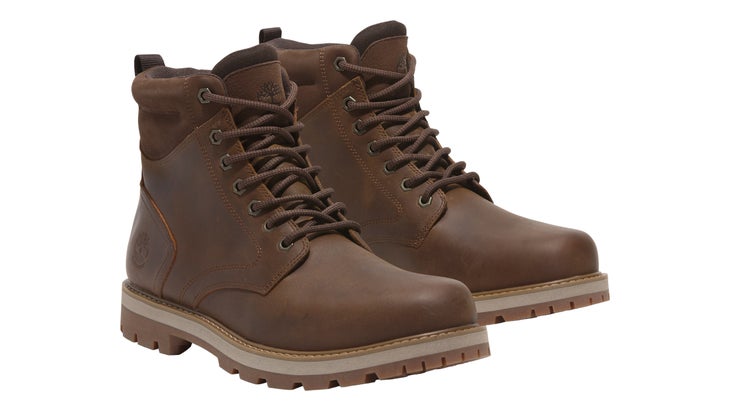
From shoveling the driveway and walking the dog to tailgating in the ski area parking lot, the Timberland Men’s Britton Roads Mid Lace-Up Waterproof Boots will be your go-to all season long. Stay dry thanks to the Waterproof Premium Timberland®️ Leather upper and a TimberDry™️ waterproof membrane. Keep feet comfortable with the TimberCush™️ comfort system and OrthoLite®️ Impressions memory foam footbed. And easily slip them on with the no-fuss, lace-up style. A ReBOTL™️ fabric lining containing 50% recycled PET plastic and EVA midsole round out this durable, versatile boot.
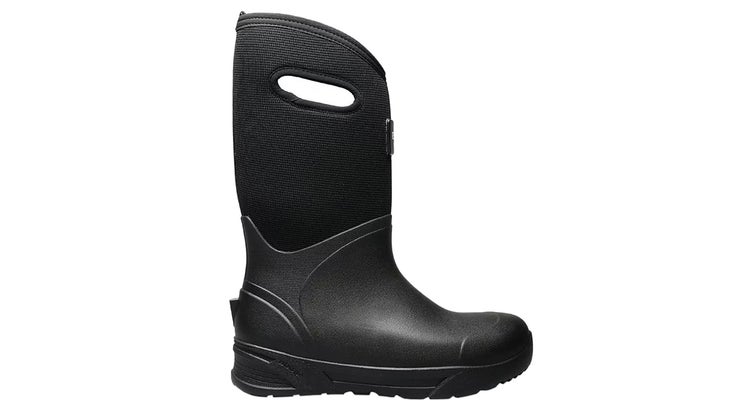
Best Men’s Boot for Outdoor Chores
Bogs Bozeman Tall Boots
Size Range: 7-14 (men’s)
Pros and Cons
⊕ Durable
⊕ Extremely warm
⊕ Waterproof and breathable
⊕ Stretchy inner bootie
⊗ Overkill for casual wear
“Muck boots at their finest,” gushed naturalist and polar expedition guide Benjamin Shulman, who says these quickly replaced his previous go-to boots for working in deep snow, ice-cold water, or slushy mud. Shulman praised the way the stretchy inner liner and EVA footbed cupped his heels—“no blisters in sight!”—and provided comfortable, stable underfoot support for walking long distances. The thick rubber outsole kept testers safe from sharp rocks, ice, and water seepage. While this boot is rated to a somewhat untestable -72 degrees Fahrenheit, we can confirm happy toes at the zero-degree mark. And despite the thick, seven-millimeter neoprene shaft that goes all the way up the calves, they’re also easy to pull on and off thanks to handles at the top of the shaft.
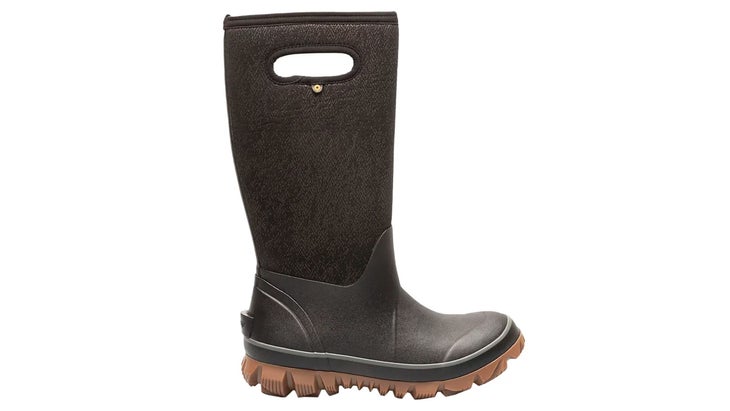
Best Women’s Boot for Outdoor Chores
Bogs Whiteout Faded Boots
Size Range: 6-12 (women’s)
Pros and Cons
⊕ Extremely warm
⊕ Waterproof and breathable
⊕ Fleece lining for extra coziness
⊗ Overkill for casual wear
Like the Bozeman Tall, the Whiteout Faded is built with seven millimeters of waterproof insulation to reliably protect feet through deep snow, slush, and puddles. It has chunky lugs on the outsole for incredible grip and a comfortable, stable footbed. The fleece lining kept every inch—from our shins to the tips of our toes—toasty, and big pull loops made them simple to tug on and off. One of our New Mexico-based testers relied on them for farm chores and said: “Even though they were covered in goat poop and mud by the end of slush season, the rubber sole and foot made them easy to hose off, and now they’re as good as new.”
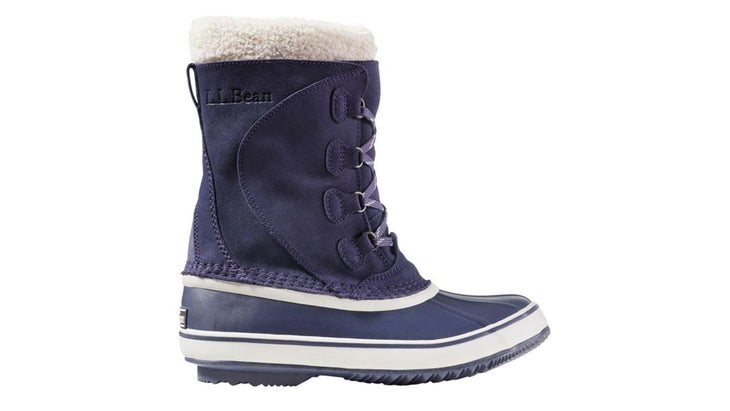
Best for Deep Snow
L.L. Bean Snow Boot
Size Range: 7-14 (men’s), 6-11 (women’s)
Pros and Cons
⊕ Cuff fits over snow pants
⊕ Fully gusseted tongue
⊕ Snow collar
⊕ Fits well out of the box
⊗ Rubber outsole is a bit thin
⊗ Not 100% waterproof
The Snow Boot reminded testers of the boots they wore on snow days as kids: secured with a classic lace-up system, reliable at keeping snow off of calves and away from our feet, and warm as heck thanks to its faux-fleece felt lining. “These were not the most attractive boots, but among the more functional,” said one Santa Fe tester, who added: “Given the shallow treads, the traction is impressive—these came on a winter hike or two and were a favorite at the ski resort.” That’s in large part due to the generous opening, which has space to tuck pants into and makes for easy on-and-off. The waterproof rubber outer wraps around the entire foot, like a duck boot, while the water-resistant nylon uppers (the women’s version comes in suede or leather) are durable, flexible, and wide enough to easily fasten over ski pants.
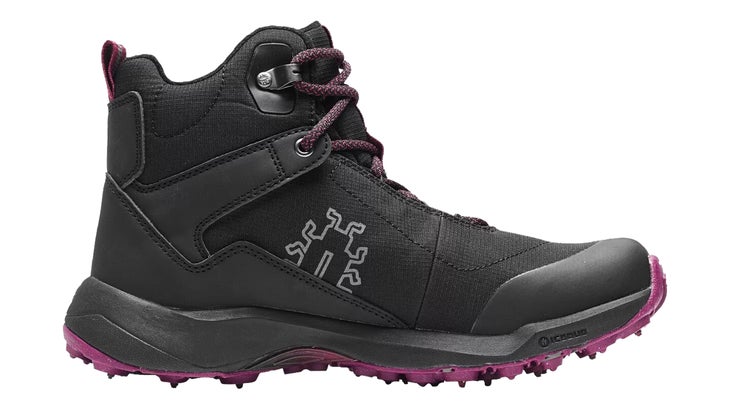
Best Traction
Icebug Pace3 BUGrip GTX
Size Range: 7-15 (men’s), 5.5-10.5 (women’s)
Pros and Cons
⊕ Studded
⊕ Secure laces
⊗ Can’t wear indoors
This mid-cut winter boot has 16 steel studs embedded in its partially recycled rubber sole that act like miniature crampons. The studs actually retract into the soft sole on hard surfaces like asphalt—similar to high-end snow tires—allowing for more stability while walking off of the snow and ice (but they’ll still destroy your floor.) The boot’s waterproof, breathable, and insulating Gore-Tex membrane kept our testers’ feet warm and dry during their messiest, longest winter hikes. “I can wear them in pretty low temps and my feet still stay warm—down to the teens,” added Minnesota-based tester Stephanie Pearson.
Other Products We Tested
- : Testers wore this goofy-looking boot more frequently than they thought they would, thanks to the grippy Vibram sole, light weight, and high ankle flexion. Plush shearling lining and a chunky midsole add tons of comfort, but the futuristic look of these boots was a major turnoff.
- ): “The price is insane, but I can’t deny the quality is there,” said one tester, who found these comfortable immediately out of the box. “It felt like slipping into the winter boot version of a classic Dansko clog, which is to say heavy as hell but also ergonomically supportive.” High quality or not, we can’t enthusiastically recommend these, given how clunky and expensive they are.
- : These didn’t make our final list because of the long break-in time—testers weren’t really comfortable in them until about a month of regular wear, which is asking too much for most consumers. The stiff inner boot, which is removable and can double as a house slipper, and Vibram Arctic Grip sole provide exceptional stability on slick hardpack, while the wool loden—a type of woven, boiled yarn—and suede outer naturally sheds water.
- : These do-it-all boots are classics for a reason. Comfortable straight out of the box, perfect for hikes, snow, and dinner in town. They aren’t quite as warm as some of the other boots on our list, which is the only reason they didn’t rank higher.
How to Choose a Winter Boot
If you expect to walk through lots of snow, look for a boot with a tall shaft measuring about eight or ten inches. A snow collar at the top is a bonus. For a more rainy winter climate, waterproofing details are key, whether rubber rands, neoprene liners, or good ol’ Gore-Tex. While “water-resistant” material may keep you dry enough for short periods in powdery snow, you need true waterproof membranes for wet conditions.
Avoid boots without fully gusseted tongues. Look to see if the tongue is attached directly to the upper from top to bottom. Also beware of perforations in the upper designed to make the boots more breathable—those holes could be a liability in deep water or snow.
When it comes to traction, look for widely spaced lugs on the outsole rather than wavy treads. For an example, look at the pattern on Vibram Arctic Grip soles. Note that no outsole can give you surefootedness on ice by itself; that’s what microspikes and studs are for.
Judging how comfortable a boot will be long-term is difficult at first glance, and pain points unique to your foot often won’t show up for the first few hours or days of wear. Unless you’re sure about the fit, don’t buy boots that can’t be returned after you’ve worn them a few times.
How We Test
- Products tested: 38
- Testers: 10
- Visits to ski resort parking lots: 117
- Miles walked in the snow: 500
- Number of falls on ice: 4
We began our process with an inventory of products that myself and lead tester Stephanie Pearson had reviewed for previous editions of the ���ϳԹ��� Winter Gear Guide for the past several years. We stacked those boots up against the personal favorites from our long-time testers, the latest and greatest winter boot releases, and popular picks from across the internet.
From December 2023 through April 2024, each tester rotated their test boots through regular winter activities: walking, driving, hiking, skiing, snowshoeing, schlepping kids to school, running errands, and outdoor chores. At the end of the testing period, each tester nominated their five favorite boots and assigned ratings for warmth, comfort, traction, and style on a scale of 1 to 5. From those lists and ratings, our category manager narrowed down and vetted the winners.
Meet Our Testers
Svati Kirsten Narula, a contributing editor at ���ϳԹ��� and the digital editor of Dartmouth Alumni Magazine, is a writer and runner based in Santa Fe, New Mexico. When she’s not working, you’ll find her on the trails—often with one or all of her three dogs in tow.
Stephanie Pearson is a freelance writer for ���ϳԹ��� and a former category manager for winter boots in the ���ϳԹ��� Gear Guide. She lives in Duluth, Minnesota, where she grew up nordic skiing and shoveling lots of snow.
Benjamin Shulman is a runner, skier, naturalist, and wildlife photographer based in Santa Fe, NM. He travels frequently to the polar regions working as a field guide on small-ship cruises with National Geographic and Lindblad Expeditions.


